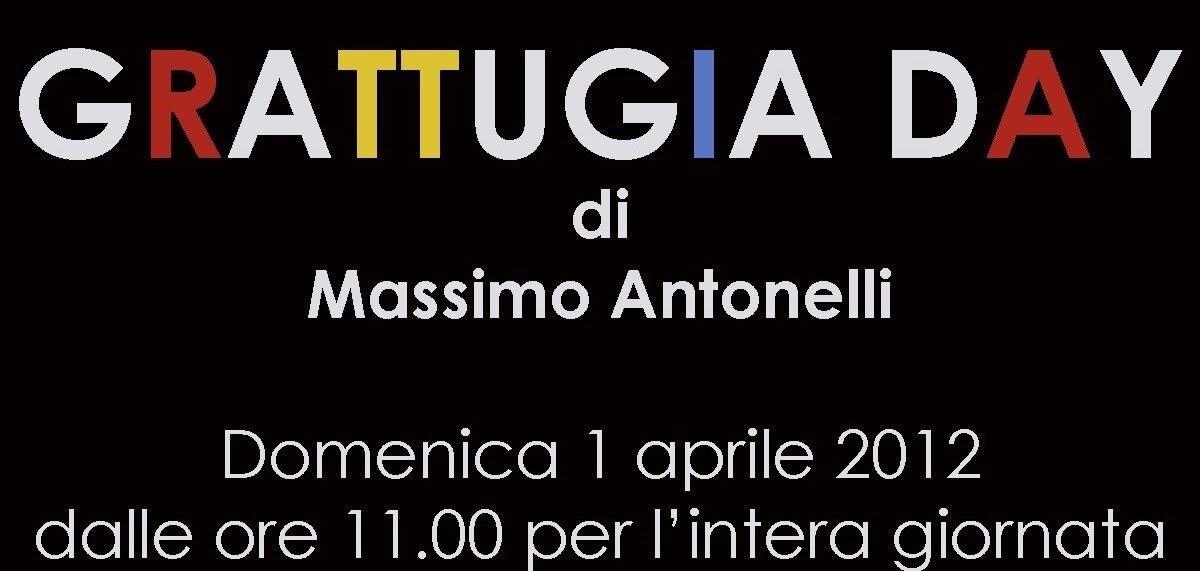Che la grattugia di Massimo Antonelli rappresenti metaforicamente l’abitazione è un dato certo. Ma quale abitazione? Non certo un’abitazione organica come la casa sulla cascata di Wright. Al contrario si potrebbe subito definire anti-organica, una prigione, un alveare. Le grattugie di Massimo Antonelli sono le periferie come Scampia e il Corviale, con le loro alienazioni, i disagi e le sofferenze; sono l’Unité d’Habitation di Le Corbusier dove tutto è organizzato, previsto, studiato e progettato. Sono “macchine” per abitare.
Ma sono anche le New York, Manhattan, le metropoli brulicanti di impiegati e uomini indaffarati, prigionieri dei propri affari; sono i quartieri alti, i condomini di viale delle Milizie, e delle eleganti palazzine belle epoque con inquilini perbenisti e benpensanti; sono i villini di via del Papavero e del viale dei Tigli dove, in contrapposizione ai nomi naturalistici, l’uomo interviene devastando l’ambiente e la natura, cercando di riparare dedicando ai fiori la toponomastica… Ma sono sempre palazzi, con buchi al posto delle finestre. Palazzi che, come le grattugie, grattano, fanno male, chiudono gli abitanti in prigioni fisiche o mentali.
Poi c’è la curiosa, enorme grattugia rossa Fermata d’autobus che non è un palazzo, è un luogo dove passa il bus, ma lo stesso bus non è che un’altra grattugia con le ruote che porta in giro gli uomini da un palazzo all’altro. Così come le automobili, tante piccole grattugine incastrate in una fra le più grosse idiozie umane: il traffico.
Che questa sua frenetica produzione di grattugie sia un grido di orrore su ciò che l’uomo costruisce e su come vive è evidente. Ma chi abita dentro le grattugie? Uomini senza contatti umani in condomini spaesanti, uomini nel degrado delle periferie, uomini in blocchi di cemento che soffocano di lavoro, uomini borghesi dietro la facciata del perbenismo… Il suo grido di orrore vuole stimolare una rottura, un’uscita da questi schemi e infatti da metalliche diventano di creta e si plasmano, si contorcono, si spaccano, crollano…
Per capire meglio tutto ciò, è importante conoscere la personalità di Massimo Antonelli, un personaggio che da sempre si è battuto per non restare intrappolato negli schemi della società, che ha cercato di evadere dalle abitudini familiari, prima, e dalle regole del lavoro dopo.
Antonelli si è sempre rifiutato di vivere in una grattugia, sia architettonicamente che mentalmente. Il suo bisogno di spazio e di libertà lo hanno portato a dedicarsi ad una cospicua e varia produzione artistica che ruota tutta intorno all’elemento metaforico. Forse ne è lui stesso rimasto imprigionato. Ma lo ha fatto e continua a farlo per denunciare la comune abitudine alla ripetitività, alle tradizioni mai contraddette, agli standard di vita a cui molti sono assoggettati.
The day of the grater by Claudia Lodolo
It is a certain fact that Massimo Antonelli’s grater metaphorically represents the home. But which house? Certainly not an organic home like Wright’s waterfall house. On the contrary, it could immediately be defined as anti-organic, a prison, a beehive. Massimo Antonelli’s graters are the suburbs like Scampia and the Corviale, with their alienations, hardships and suffering; they are Le Corbusier’s Unité d’Habitation where everything is organised, foreseen, studied and designed. They are “machines” for living.
But they are also New York, Manhattan, the metropolises teeming with employees and busy men, prisoners of their own affairs; they are the uptown neighborhoods, the condominiums on Viale delle Milizie, and the elegant belle epoque buildings with respectable and right-thinking tenants; they are the villas in via del Papavero and viale dei Tigli where, in contrast to the naturalistic names, man intervenes by devastating the environment and nature, trying to repair by dedicating the toponymy to the flowers… But they are always buildings, with holes in place of the windows. Buildings that, like graters, scratch, hurt, lock the inhabitants in physical or mental prisons.
Then there is the curious, enormous red grater. Bus stop which is not a building, it is a place where the bus passes, but the bus itself is just another grater with wheels that takes men around from a palace to another. Just like cars, many small graters stuck in one of the biggest human idiocies: traffic.
It is clear that his frenetic production of graters is a cry of horror about what man builds and how he lives. But who lives inside the graters? Men without human contact in disorientating condominiums, men in the degradation of the suburbs, men in concrete blocks suffocating with work, bourgeois men behind the facade of respectability… His cry of horror wants to stimulate a break, an exit from these patterns and in fact from metallic they become clay and are shaped, twisted, split, collapsed…
To better understand all this, it is important to know the personality of Massimo Antonelli, a character who has always fought not to be trapped in the patterns of society, who tried to escape from family habits first and from the rules of work later.
Antonelli has always refused to live in a cheese grater, both architecturally and mentally. His need for space and freedom led him to dedicate himself to a conspicuous and varied artistic production that revolves entirely around the metaphorical element. Perhaps he himself was imprisoned by it. But he did it and continues to do so to denounce the common habit of repetitiveness, of never contradicted traditions, of the standards of life to which many are subjected.
